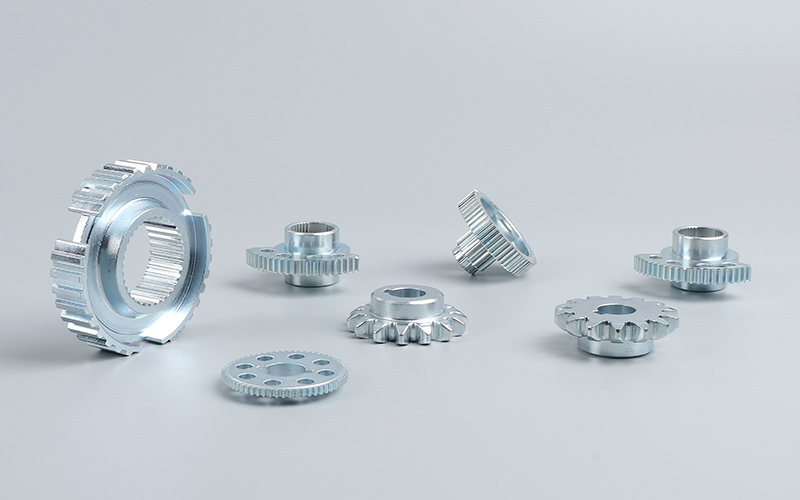Chrome plating is an electrochemical process in which a thin layer of chrome is applied on the surface of workpiece by dipping it into an electrolyte and passing a current. This is done in order to enhance the physical and mechanical properties of the substrate, making it more durable and corrosion-resistant. Not only this, chrome plating also gives a visually appealing finish to the components, making it suitable for decorative purposes as well. As a result, it is widely used both in the decorative field and in the engineering field to make mechanically efficient components in the aerospace and automotive industries.
Contents
History of Chrome Plating
Chrome plating was developed in the 1920s when it was successfully used to coat steel. By the mid-20th century, chrome plating was a symbol of modern design, especially in the automotive industry. However, environmental concerns over toxic hexavalent chromium resulted in stricter regulations in the 1980s. After that, researchers moved to safer trivalent alternatives and the rise of chrome-free technologies.
Chrome Plating Process
Surface Preparation
First of all before any plating can occur, the substrate surface is properly prepared to ensure good adhesion of the chromium layer. This typically includes:
- Degreasing to remove oils and contaminants
- Abrasive cleaning (e.g., blasting) to remove oxides or previous coatings
- Pickling in acid to remove surface scale or rust
- Rinsing thoroughly between each step
Activation
After cleaning the surface, the workpiece is activated by immersing it in an acid solution (39.6 ml/L H₂SO₄) at room temperature for about half a minute.
Electroplating Process
Here, the workpiece is dipped into the electrolyte, and an electrical current drives a redox reaction. As a result, a thin, adherent layer of chromium metal deposits onto the surface of the workpiece. The workpiece acts as the cathode, and the plating bath contains chromium ions derived from either hexavalent (Cr⁶⁺) or trivalent (Cr³⁺) chromium salts. The basic reaction involved here is:
For trivalent chrome plating: Cr³⁺ + 3 e⁻ → Cr (metal)
For hexavalent chrome plating: Cr₂O₇²⁻ + 14 H⁺ + 6 e⁻ → 2 Cr (metal) + 7 H₂O
Post-treatment
After the thin dense chrome plating is done the component is subjected to some post treatments depending upon the requirements:
- The workpiece is rinsed in deionized water to remove residual chemicals.
- Passivation may be done for enhanced corrosion resistance.
Chrome Plating Process Parameters
| Type | Current Density (A/dm²) | Temp (°C) | Cr Concentration (g/L) | pH |
|---|---|---|---|---|
| Decorative (Hexavalent) | 7.5–17.5 | ~40 | 250–300 (CrO₃) | <1 |
| Hard Chrome (Hexavalent) | 30–60 | ~50 | 250–500 (CrO₃) | <1 |
| Trivalent Chrome | 5–16 | 20–50 | 4–25 (Cr³⁺) | 2–4 |
Different Methods of Chrome Plating
There are two basic methods of chrome plating, depending on the bath composition: trivalent chrome plating and hexavalent chrome plating.
Trivalent Chrome Plating (Cr³⁺)
It uses chromium in the +3 oxidation state, typically chromium sulfate or chloride, complexed with organic acids. Trivalent Chromium plating offers:
- The toxicity of trivalent chromium is low, only 1/100 of that of hexavalent chromium, and no hexavalent chromic acid mist is produced.
- It causes less pollution to the environment and wastewater is easy to treat.
- The current efficiency of the plating solution is high, up to 25%
- The electroplating process can be carried out at room temperature without heating.
- The bonding strength of the chrome plating layer will not be affected by the interruption of current during the electroplating process
- Complies with environmental regulations (e.g., RoHS, REACH)
- More uniform plating thickness of 0.13 to 25 µm
- High-quality and aesthetic finish
Bath Composition: Chromium sulfate or chloride, Complexing agents such as glycine and formic acid,Wetting agents, and conductivity salts.
Hexavalent Chrome Plating (Cr⁶⁺)
It is the traditional method for chrome plating, which uses chromic acid (CrO₃) and sulfuric acid (H₂SO₄). It produces the classic bright, mirror-like chrome finish and is still widely used for hard chrome and decorative applications. It provides the components with high hardness and wear resistance as well as good corrosion resistance. It is widely used in the automotive, aerospace, and tooling industries.
Bath Composition: Chromic acid (CrO₃), Sulfuric acid (H₂SO₄) in a 100:1 ratio and fluoride catalysts for mixed-catalyst systems.
Hexavalent Chrome Plating Vs Trivalent Chrome Plating
| Feature | Trivalent Chrome Plating | Hexavalent Chrome Plating |
|---|---|---|
| Chemical Base | Chromium (III) – Cr³⁺ | Chromium (VI) – Cr⁶⁺ |
| Color Appearance | Greyish-blue or slightly darker silver | Bright, mirror-like bluish-silver |
| Corrosion Resistance | Comparable or superior with passivation | Excellent with thicker deposits |
| Hardness | 800–1000 HV | 850–1000 HV |
| Toxicity | Low toxicity | Highly toxic and carcinogenic |
| Waste Treatment | Easier and less expensive | Complex and costly |
| Plating Efficiency | Higher (up to 25–30%) | Lower (10–15%) |
| Applications | Automotive, aerospace, decorative | Military, aerospace, industrial wear |
| Cost | Slightly higher operational cost | Lower chemical cost, higher waste cost |
Types of Chrome Plating
Decorative Chrome Plating
As the name suggests, it is used for decorative purposes because it provides a bright, reflective surface with a characteristic bluish-white haze. With a typical thickness of 0.13–1.3 μm, it offers moderate corrosion and wear resistance compared to hard finish chrome plating. As a result, it is considered ideal for automotive trim, household fixtures, and hardware.
Hard Chrome Plating
Hard chrome plating can reach a hardness of HRB68 to 72 and is used to increase the durability, wear resistance and corrosion resistance of mechanical parts. The chrome layer is usually 10 to 500 μm, but layers over 250 micrometers can crack and weaken the metal underneath. This type of chrome plating is used for hydraulic rods, engine components, and printing rollers.
Black Chrome Plating:
It is done by modifying the bath chemistry typically trivalent chromium combined with other metal salts such as nickel or cobalt. Black chrome plating offers a dark, satin-to-matte finish with moderate corrosion and wear resistance, as well as an aesthetic appeal. As a result, it is often used in optics, solar panels, aerospace, and luxury automotive trim.
What Materials can be Chrome Plated?

Metals:
Steel and its Alloys: These are widely used and good bases for both decorative and hard chrome.
Brass: Chrome-plated brass is commonly used in plumbing fixtures and decorative items.
Copper: It is used as an underlayer to provide better adhesion and appearance.
Aluminum: can be chrome plated but needs special pretreatment to ensure proper adhesion.
Plastics
It can be done but it is done through two-step process:
- Electroless plating usually uses nickel to make the surface conductive.
- Electroplating to apply the chrome finish.
What is Chrome Plating Used for?
Mostly it is used on parts like pistons, hydraulic rods, molds, dies, and engine components to reduce friction and extend lifespan. Here are its further uses:
Sintered Metal Parts
Chrome plating improves the corrosion resistance and surface finish of sintered metal parts. However, due to the internal gaps in these parts, if electroplated directly, the plating solution can remain inside, leading to corrosion. Therefore, it is essential to fill the internal pores first. Common densification and sealing techniques for sintered parts include resin impregnation and copper infiltration.

Restoring Worn Parts
Thick chrome layers can rebuild dimensional tolerances on worn mechanical parts.
Low Friction Surfaces
Due to its smoothness and durability, it is Ideal for sliding parts or sealing surfaces.
Automotive
Chrome plating features a bright, easy-to-clean surface that enhances corrosion resistance and is commonly used in automotive parts.
For example, chrome plating on shock absorber piston rods increases surface hardness, improves wear resistance, and extends service life.



